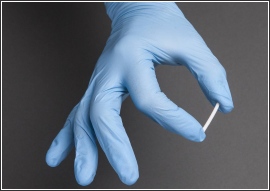 Many state-funded addiction treatment services have undergone gradual cuts during the last 15 years. With the rising opioid addiction crisis in America, better access to opioid treatment is definitely needed.
Many state-funded addiction treatment services have undergone gradual cuts during the last 15 years. With the rising opioid addiction crisis in America, better access to opioid treatment is definitely needed.
There are a number of private clinics and outpatient treatment centers opening their doors in most every state. These private clinics are meeting a need for services that are often absent in more remote areas of the country.
Some new opioid treatment providers are smaller, independent methadone clinics while others are part of a larger network such as those owned by Acadia Healthcare, Behavioral Health Group (BHG), or Colonial Management Group.
They all have one thing in common, and it is that they provide their patients with medication-assisted treatment (MAT). MAT is scientifically proven to be more effective than other forms of abstinence-based treatment.
Medication assistance typically utilizes methadone or buprenorphine-based products to alleviate a patient’s chronic opioid withdrawal. Without medication-assistance, patients often face either a detox admission or they struggle on in a daily effort to secure opiates so as to prevent the return of withdrawal sickness.
People ready for opioid treatment may find that their local methadone clinic is full, or that their nearest clinic is just too far away to access on a daily basis. For some patients, suboxone/buprenorphine may be the best solution since a prescription can be obtained for several weeks of medication before a return visit is required.
Access to treatment is currently on the radar of national healthcare officials and government legislators, many of whom have received numerous letters and calls from families requesting more funding for treatment, and better access. Media coverage has also been much improved during the past 3 years in part due to the widespread opioid crisis and its broad impact.
Supporting local opioid addiction treatment services is important for every community. It ultimately saves lives, reduces crime, and promotes recovery so that addicted patients can work and function.

 Follow
Follow

 The U.S. House of Representatives just passed a sweeping reform, called the 21st Century Cures Act, that will infuse $1 billion in new funding earmarked for opioid treatment and prevention services.
The U.S. House of Representatives just passed a sweeping reform, called the 21st Century Cures Act, that will infuse $1 billion in new funding earmarked for opioid treatment and prevention services. The FDA has approved a new implantable drug called Probuphine. Probuphine contains the partial opioid agonist, buprenorphine, which is used to suppress the opioid withdrawal symptoms that interfere with daily life.
The FDA has approved a new implantable drug called Probuphine. Probuphine contains the partial opioid agonist, buprenorphine, which is used to suppress the opioid withdrawal symptoms that interfere with daily life. The growing problem around opioid addiction continues to receive coverage in the media, and it has become a topic of discussion on the campaign trail because candidates are being approached throughout the country by concerned families and citizens.
The growing problem around opioid addiction continues to receive coverage in the media, and it has become a topic of discussion on the campaign trail because candidates are being approached throughout the country by concerned families and citizens. An article in the
An article in the 


